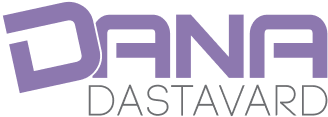Using a Rebranding Strategy for Chinese Products in the Iranian Market
Written by Kamran Talebi Fard, PhD in Business
These days, following the four-year ban on car imports, we are witnessing the proliferation of Chinese brands and products in the market. The sanctions on the automotive industry, along with the ban on car imports, have made the Iranian automotive market exclusively available to the Chinese. In any case, every month we witness news of a new Chinese product entering the Iranian market. However, what is interesting is that over the past two years, manufacturers or, in other words, assemblers of Chinese cars have benefited from the new policy of using new or localized names, even along with using new logos, for their new products. Although one side of this issue is rooted in the automotive industry sanctions and their circumvention by these manufacturers, the other side of the story is branding, or better said, re-branding, for these Chinese newcomers. In this article, we will examine this issue and the reasons for the success or failure of this branding strategy;
Since 2003 and the arrival of the first Chinese cars in Iran, the issue of the name and brand of these cars has always been a problem for Iranian manufacturers. Some companies, such as car managers, have preferred to use non-original names for their products from the beginning, such as the name and logo “MVM” instead of the original name “Chery”, or others, such as Kerman Motor, Iran Khodro, and Saipa, have used original Chinese names, such as Lifan, Lobo, Jack, Dongfeng, or Howo. However, the fact that Chinese names are unfamiliar to our culture and literature and have no similarity with the Persian language has caused these Chinese names to not be very popular and in many cases they have even been made into jokes, such as Deng and Feng instead of Dongfeng or Liwan instead of Lifan. This issue itself has dealt a severe blow to the brand position of these cars and has weakened their brand position because when the name of a product is ridiculed, that product can never have a proper brand position in the minds of customers and be evaluated as a desirable or even suitable brand. This issue is known as Brand image as an important chapter in the branding process. Choosing a suitable name with an attractive sound and beautiful and meaningful pronunciation along with metaphor can play a significant role in the success of branding a new product. For this reason, for years, automakers who used names for their products (instead of using numbers, for example, for Mercedes-Benz or BMW cars) chose different names for their cars depending on different markets. This has been very common since the 1980s. Japanese automakers have long experience in this naming strategy. For example, since the 1980s, the Mitsubishi Pajero was marketed as the Mitsubishi Shogun in some markets, and the Mitsubishi Lancer as the Mitsubishi Colt. Toyota, Nissan, and Mitsubishi used this naming style extensively. In the 2000s, the Koreans also used this strategy. When the Hyundai Ix35 was called the Tucson in non-European markets, or the Hyundai Ix55 was called the Veracruz in non-European markets, the Hyundai Elantra was marketed as the Avante in some markets, or the Kia Cerato was marketed as the Kia Forte in the US market. European automakers also used this method, although the naming changed more in local markets. For example, the second-generation Dacia Logan was called the Renault Symbol in the Turkish market, and the third-generation Renault Megane was marketed as the Scala (hatchback) and Fluence (sedan) in some markets, including Iran. Now, about two years ago, Chinese manufacturers in our country have also used this naming strategy to strengthen the brand’s position in the market. These changes are not limited to changing the product name, and due to the unknown nature of Chinese brands, preference has been given to changing the entire brand and product name in the Iranian market, and in fact, re-branding the entire brand.
These changes have even extended to changing brand logos because most Chinese brand logos are designed with low graphic quality and do not have a proper impact on the brand image of customers in the Iranian market. For example, the logos of companies such as Lifan, Jack, or … have had a negative impact on the mental image of Iranian customers and have been ridiculed more. This issue, along with the bad records of some brands in terms of quality or safety, especially in the commercial vehicle sector (such as Howo or Dongfeng), has caused new suppliers of Chinese cars to completely change the brand name, product name, and even the logo of new products entering the Iranian market and to use a complete re-branding process. For example, three Dongfeng products have been launched by three companies: Bahman Motor, Arian Motor, and Farda Automobile Manufacturing with new names: Dignity, Lamari Ima, and Farda SX5, respectively. In the case of Lamari and Farda, the supplying companies, Arian Motor and Farda Automobile Manufacturing, in addition to changing the brand and product names, have also changed the product logo and have completely carried out the re-branding process so that there is no trace or sign of Dongfeng in these products. Now, how successful each of these three companies has been or will be in using this strategy depends on the quality and execution of their rebranding tactics. This has also happened with other new Chinese products, such as the Bahman Motor product.

